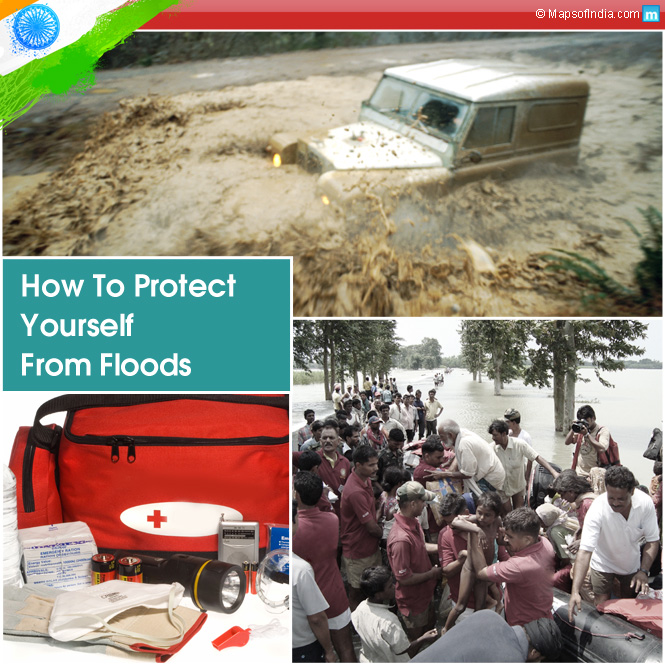Floods are a very common natural disaster across the world, whether it’s India or America. Mostly it happens in river basins due to excessive downpour, but we had also suffered from one on the hills of Uttarakhand last year that claimed 10,000 lives and destroyed property in what is called cloudbursts; we had had a third variety of the American type two decades ago when a cyclone pummelled the Odisha coast killing 20,000 people in floods caused by the rain and the surging waves from the Bay. We have also suffered huge casualties when a hitherto unkown type of catastrophe struck us all along the southern coasts, called the Tsunami.
We don’t know yet how to stop them. But we can certainly reduce the dimensions of devastation by various ways and avert much loss of lives. And when it strikes, we follow a State-controlled pre-set time-table of rescue, relief, reconstruction and rehabilitation as is happening in Jammu and Kashmir currently.
Here are some steps for flood preparedness and survival:-
Planning and preparedness
- Choose your plot – Choose the plot to build your house carefully. Avoid building on floodplains or areas with known flood concerns. When building on a riverbank is unavoidable, check for previous flood levels and plan accordingly.
- Remodel your home – In areas that are regularly affected by floods, it is best to construct a high loft or elevation which is likely to double up as a flood shelter for the family. Waterproof the walls and construct sturdy floodwalls that can keep the waters out.
- Build a flood emergency kit – In flood prone areas, it is worth building an emergency evacuation pack with the basics. Do not forget to include drinking water, high energy foods and medicines. Do not forget to routinely check and maintain this kit during the monsoons. Adding a radio and batteries will help listen to warnings.
- Train the family – Plan a coordinated evacuation strategy in case of sudden flooding. Train children and other family members to reach the elevated shafts or higher grounds during a flood emergency. Plan a communications strategy.
- Stay alert – If you live or work in a flood prone area or near the banks of a river remain alert for the possibility of a flash flood. Listen to the weather reports and stay cautious during the monsoon season, especially if incessant rains are a regular affair.
- Insure and secure – Make an inventory of all your belongings and valuables. Insure your household and belongings by taking out a flood insurance if you live in a flood-prone area.
When the flood warning is issued
- Evacuate – Evacuate as soon as a warning is issued. Do not linger in hopes that the floods may bypass your home/work. If you are driving and the waters start to rise, abandon the car and quickly get to a higher elevation.
- Necessary precautions – Before you evacuate disconnect all electrical appliances, unplug the mains and turn off all switches to avoid electrical leaks.
- Secure the basics – While evacuating carry with you only the basic requirements. In case you wish to carry a pack of important or identification documents seal them in waterproof packages. Ensure you have stocked up on clean drinking water in your evacuation loft or flood shelter.
Getting back after a flood
- Heed warnings – Listen to warnings. Do not move back unless it is absolutely safe to return. Avoid electrical poles or lines that may be affected.
- Check for contamination/damages – Check for leaking sewage or drain pipes once you are back home. Disinfect everything that may have been contaminated. Drink boiled water till you are certain that there is no risk of contamination.
- Stay safe – Watch out for damaged beams, floors, or animals and reptiles hiding from the floods. Avoid driving unless you are sure that the roads are in proper condition.




